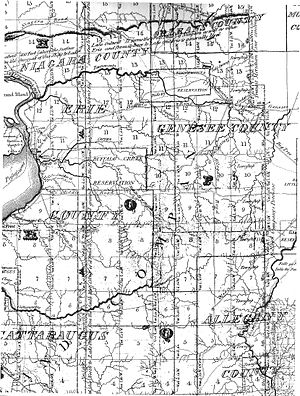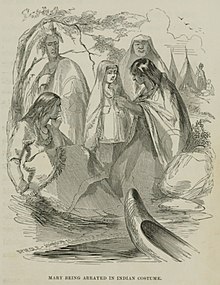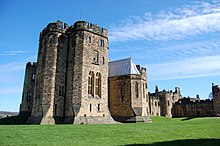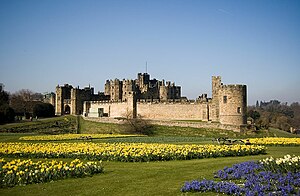DuSyl Family Lore & History: Ancient Rock Carvings, Do you have Ancient Ancesto...: http://www.nydailynews.com/news/national/researchers-discover-oldest-rock-carvings-north-america-article-1.1427727 http://fineartamer...
DuCap Sylvestre Family History Blog is all about the Ancient family history to the more current Ancestors. A Family History whose Blood Lines reach back across the Globe. DNA in hand.
31 January 2015
Ancient Rock Carvings, Do you have Ancient Ancestors that were Rock carvers?
 |
| http://www.nydailynews.com/news/national/researchers-discover-oldest-rock-carvings-north-america-article-1.1427727 |
 |
| http://fineartamerica.com/products/detailing-hagia-sophia-kantilal-patel-canvas-print.html |
 |
| http://fineartamerica.com/products/cross-slab-dingle-peninsula-co-kerry-the-irish-image-collection--canvas-print.html |
30 January 2015
Make sure you have it Verified
I have a story to tell.
I had a family member who spend alot of time researching the family tree line of my paternal maternal line.(This was over 12 years ago). They were given mis-information. The information came from a death certificate. In which the deceased last maiden name was hard to read. That one piece of info is leaked into online trees. I see it every time I pull to search for that family line. There are hundreds of trees with that incorrect piece of information. It is even in Familysearch.org.
From one person using only one document not verifying it. Adding it to their tree and never fixing it.
Lets go back to the Death Cert. I found the death certificate looked at it. Saw that it was hard to read the name. I made sure to check it against other sources. So I could know the correct maiden name. This was a process. Months in the making. Worth every day to know the information for that GGranmother is correct.
As you discovery information on your ancestors you may at times find yourself provided with information passed on to you by another Family Historian.
Now you have some choices to make. As well as questions to ask your self.
1. Is the information sourced?
2. Where do I find the source?
3.Can I easily verify the source?
4.How do I know its the correct information?
5. Add it to my tree before I verify the source?
My answers to these questions is as follows:
1. Even if its sourced you must backtrack yourself. Meaning find that source documentation. Review the source document, how valid is the source document? Who provided the information for the source document? I know it's alot of questions to answer. I can guarantee if you do this extra leg work. When you Vett you family tree, you can stand by it with surety.
2. Depending on where the documentation is coming from. Go back to the original information given to you. Can you ask them where they got the information? If so ask them. If you get the run around you just know they most likely do not have accurate documentation but they put it in there like fact anyway.
Just like When I see a public tree on-line and ask the provider of the information where did they get the information from, over and over again I'm told from the internet, ancestry.com, etc... They never bothered to verify anything. So now other folks can come along and pick up the misinformation as if its accurate info. Then they continue the missteps of those to follow.
3. No source is ever easy to verify. It does take time. Family History Genealogy is not a quick process although some, very few, things might come easy.
4. Find three sources for the same piece of information.
5. If your tree is Public Never!!!
If your tree is set to private how are you noting that the information still needs verification?
Happy Ancestor Hunting
28 January 2015
Wait A Minute
Copying information directly from Ancestry.com is Guess What? It is not *vetted information. Meaning that you must still do the leg work before you accept the hints etc... as a fact.
You need sources to prove your fact.
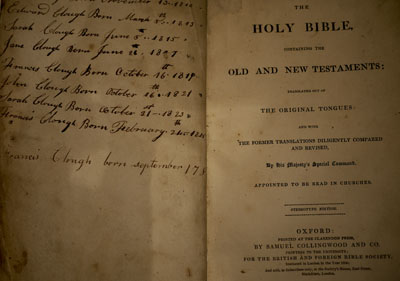 |
| http://www.genealogyintime.com/records/newest-genealogy-records.html ...found n that site |
What makes a "Fact" in genealogy. A Fact is a piece of information that you have found at least 3 documents. Yes I said 3 documents.
What is a Source Document in genealogy: Birth record, Baptismal record, Confirmation record, a religious event in which their parents gave the information, School records, a Marriage record. Those are source Documents.
_Marriage_2_DGS_4482128_410.jpg) |
| Document found at :https://familysearch.org/ |
To make the work you do more valuable get your sources, get those documents, at least know where to send others to get the documents too.
All other kinds of documents can only help you with finding where to get the source docement.
History of Western New York: Treaty of Big Tree " Unknown History"
HISTORY of Western New York, Niagara Area
Treaty of Big Tree
From Wikipedia, the free encyclopedia to read the treaty:
http://digital.library.okstate.edu/kappler/vol2/treaties/sen1027.htm
Treaty of Big Tree was a formal treaty, held from August 20, 1797, until September 16, 1797, between the Seneca nation and the United States. The delegates for both parties met at the residence of William Wadsworth, an early pioneer of the area and Captain of the local militia, in what is now Geneseo, New York. A meadow between Wadsworth's cabin at Big Tree and the gigantic oak by the river, which gave the place its name, was the site of the conference.
In attendance were nearly three thousand Seneca and other prominent members of the Six Nations of the Iroquois. Representing them were their hoyaneh chiefs:Cornplanter, Red Jacket, Young King, Little Billy, Farmer's Brother, Handsome Lake, Tall Chief, Little Beard and others; the clan mothers of the nation; and *Mary Jemison. Those in attendance representing the United States were: Colonel Jeremiah Wadsworth, Commissioner, assigned by President George Washington to represent the United States government; Captain Charles Williamson and Thomas Morris, representing his father; Robert Morris; General William Shepard, representing Massachusetts; William Bayard, representing New York; Theophilus Cazenove and Paolo Busti, representatives for the Holland Land Company; Captain Israel Chapin, representing the Department of Indian Affairs; Joseph Ellicott, land surveyor; and James Rees as acting secretary. The official interpreters were Horatio Jones and Jasper Parish.
All of the treaty delegates for the United States were housed in William's log cabin and new cobblestone house. A council house was erected by the Seneca and the proceedings were held there. The treaty was signed on September 15, 1797, after nearly a month of, at times heated, back-and-forth negotiations. This treaty is substantial as it opened up the rest of the territory west of the Genesee River for settlement and established ten reservations, perpetual annuities and hunting and fishing rights for the Seneca in Western New York. * After the war, the Seneca were forced to give up their lands to the United States as allies of the defeated British. In 1797 the Seneca sold much of their land at Little Beard's Town to European-American settlers. At that time, during negotiations with the Holland Land Company held at Geneseo, New York, Mary Jemison proved to be an able negotiator for the Seneca tribe. She helped win more favorable terms for giving up their rights to the land at the Treaty of Big Tree (1797)
Treaty of Big Tree
http://en.wikipedia.org/wiki/Phelps_and_Gorham_Purchase
Before Morris could give the Holland Land Company title to this land, however, it was necessary to extinguish the Indian's pre-emptive right to the land.[1] This was achieved at the 1797 Treaty of Big Tree, executed on theGenesee River near modern-day Geneseo, south of Rochester, New York.[1] Representatives of the Holland Land Company, Robert Morris, the Indians, and a commissioner for the United States gathered at Big Tree in August, 1797 and negotiations began.[1] Chiefs and Sachems present included Red Jacket, Cornplanter, Governor Blacksnake, Farmer's Brother and about 50 others. Red Jacket and Cornplanter spoke strongly against selling the land. They held out for "reservations," that is, land which the Indians would keep for their own use.[1] After much discussion, the treaty was signed Sept. 15, 1797. The native Indians were to receive $100,000 (about $1.39 million today) for their rights to about 3.75 million acres (15,000 km²), and they reserved about 200,000 acres (809 km²) for themselves.
In 1798, the New York Legislature, with the assistance of Aaron Burr[4] authorized aliens to hold land directly, and the trustees conveyed the Holland Purchase to the real owners. It was transferred to two sets of proprietors, and one of these sets soon divided into two, making three sets of owners altogether. Each set of proprietors owned their tract as “joint tenants” with right of survivorship, which means as proprietors died off, the surviving proprietors took the deceased's share, and that share did not pass by will or inheritance, except in the case of the last survivor.
. .
27 January 2015
Historic Snowstorms: Do you have an ancestor that was there, did they lose their life cause of it?
Snowmadgeddon
Credit: NASA Earth Observatory.
Two blizzards in February 2010 broke snowfall records in the mid-Atlantic region, such as a whopping 32.4 inches (82.3 cm) of snow at Washington's Dulles International Airport. After the second snowstorm in February, 68.1 percent of the country was blanketed by snow. The term "snowmadgeddon," around since 2009, stuck when President Barack Obama used it at the Democratic National Committee's winter meeting during the storm.
The Super Bowl 9 Jan 1975 Blizzard
Credit: Wikimedia Commons/NOAA
The Super Bowl Blizzard takes the trophy for most unusual: A record low-pressure system (961 millibars), it sparked tornadoes in the Southeast before heading into the upper Midwest, where heavy snows and cold killed more than 100,000 farm animals. Unlike many winter storms, which sweep in from Canada, the Super Bowl Blizzard started in the Pacific and crossed the Rocky Mountains. As it headed over the Plains on Jan. 9, 1975, the first of 45 tornadoes spun up. The two-day outbreak killed 12 people and injured 377. In the Midwest, the front mixed with Arctic air from the north and warm Gulf of Mexico moisture, the classic ingredients for a winter blizzard. Heavy snows and winds kill 58 people.
The Armistice Day Blizzard Nov 11 1940
Credit: Library of Congress
An exploding bomb (weather lingo for a large pressure drop) went off over the Midwest on Nov. 11, 1940, as cold Northern air collided with warm Gulf Coast moisture. The raging blizzard quickly chilled the air, and fierce winds built 20-foot (6 m) snowdrifts. A total of 145 deaths were linked to the storm, including about 25 duck hunters who were not prepared for the cold weather forecasters had not predicted the severity of the coming storm.
d:The Knickerbocker Storm Jan 27/28 1922 Storm
Credit: Library of Congress
This blizzard gained notoriety for its heavy, wet snows, which collapsed the roof at one of the most popular venues in Washington, D.C. The storm takes its name from the cave-in at the Knickerbocker Theater, which killed 98 people and injured 133. As much as 3 feet (90 cm) of snow fell in the Maryland, Virginia and Pennsylvania during the blizzard, which hit Jan. 27 and Jan. 28 in 1922.
e:The Great Appalachian Storm Nov. 24 1950
Credit: NOAAA winter storm marked by heavy rains, winds and blizzard conditions, the Great Appalachian Storm formed over North Carolina before looping around Ohio, devastating much of the Southeast along the way. The Nov. 24, 1950, storm, responsible for 353 deaths, became a case study for tracking and predicting winter weather.
The Children's Blizzard 12 Jan 1888
Credit: Wikimedia Commons/NOAAThe Children's Blizzard earned its tragic name because of its timing. On Jan. 12, 1888, temperatures dropped from a relatively balmy few degrees above freezing to a wind chill of minus 40 degrees Fahrenheit (minus 40 degrees Celsius) in the Dakota Territory and Nebraska. Because of the warm day, thousands were caught unprepared for cold weather, including schoolchildren sent home by their teachers during the storm. The death toll was 235.
Could this be the storm in which children lost their lives in the book "The Long Winter" by Laura Ingalls Wilder?
Nov. 7, 1913
g:The White Hurricane
Credit: Wikimedia Commons/Marine Museum of the Great LakesA blizzard with hurricane-force winds, this devastating storm is the deadliest natural disaster to ever hit the Great Lakes region. More than 250 people died when the winter whopper, called a November gale, struck the Great Lakes on Nov. 7, 1913. Waves on the lakes reached 35 feet high (10 meters) and the storm's sustained wind speed reached 60 mph (96 km/h) for more than half a day.
The Storm of the Century 12 March 1993 Credit: NASA.
Can a storm be a both blizzard and a cyclone? Yes, and it's nasty. The Storm of the Century wreaked havoc from Cuba to Canada. As strong as a hurricane, covering an entire continent, the storm was responsible for 310 deaths, $6.6 billion in damage, and shut down the South for three days. Coming a week before spring, on March 12, 1993, the hit was hard to take. However, the Storm of the Century marked the first successful five-day forecast by the National Weather Service of a storm's severity, and a State of Emergency was declared in some regions before snow even started falling.
The Great Blizzard of 1899
Credit: Library of CongressFrom Georgia to Maine, a punishing storm shut down the Eastern Seaboard beginning Feb. 11, 1899. The wintry weather brought record-low temperatures, some of which still stand today, as well as record snowfall. The snow showers started in Florida and moved north, dropping 20 inches (50 centimeters) in Washington, D.C., in a single day and a record 34 inches (86 cm) in New Jersey.The Great Blizzard of 1888
Credit: Library of CongressMore than 400 people in the Northeast died during the Great Blizzard, the worst death toll in United States history for a winter storm. On March 11 and March 12 in 1888, this devastating nor'easter dumped 40 to 50 inches (100 to 127 cm) of snow in Connecticut, Massachusetts, New Jersey and New York. Huge snowdrifts buried houses and trains, and 200 ships sank in waves whipped up by fierce winds.
all information taken from: http://www.livescience.com/31880-countdown-10-worst-blizzards.html
This list does not contain a very important Blizzard know as the Blizzard of "78" which was from Michigan To the Atlantic New England Coast
25 January 2015
Johnson Island Civil War Prisoner Of War Depot, Lake Erie. Did your Ancestor Escape?
Escapes from Johnson’s Island
Those who planned to escape and those who actually did
In 1863 and 1864, there were many prisoners who thought about leaving Johnson’s Island, with or without being exchanged. One group consisted of escape planners who organized the men into five details or groups from the 12 prison blocks. General Trimble was the ranking officer in charge but would not participate, nor order the men to attempt the escape. The reason was that one of his legs was amputated at Gettysburg making it physically impossible for him participate. The generals in charge of the details were M. Jeff Thompson, James J. Archer, William N. R. Beall, John R. Jones, and John W. Frazer. Each of the five generals then chose ten colonels whom they knew and could trust. The colonels then chose ten officers each whom they knew to be trustworthy. In this way a force of 500 men that could be trusted was created. Of the many plans that were discussed, the one that was adopted consisted of rushing the main gate when it was opened for the wagon carrying goods shipped by the Express company; then overpowering the guards and then rushing and capturing the steamer that delivered the express packages from Sandusky. Perhaps this was the best mass escape plan since the guard garrison on duty was only half of the Hoffman Battalion, about 200 soldiers. Once the prisoners had control of the island, they would sail to Sandusky and capture boats at anchor in the harbor. The boats would then take all the prisoners to Canada which was only a few hours away. Unfortunately the escape was delayed for three days because one of the groups was not ready. On the third day, the escape attempt was abandoned when the U.S.S. Michigan, with her 14 cannon, steamed into Sandusky Bay and anchored off of Johnson’s Island.
There were twelve prisoners known to have escaped from Johnson’s Island. Many more tried to leave but were apprehended before leaving the island. It is difficult to determine the total number of escape attempts, as some men realized they would be caught and therefore returned to their blocks before being detected. At times, the entry in the remarks column of the list of prisoners simply said – not here, must have escaped. Most of the successful attempts were by deception – dressing in clothing similar to the guards and walking across the ice to Sandusky or Marblehead, thence to points south to the Confederacy or north to Canada.
One prisoner, Lt .Charles Pierce, 7th Louisiana, was the most persistent and unlucky prisoner when it came to escape attempts. His seven attempts included tunneling, scaling the stockade wall and crossing the ice to Cedar point, and two attempts posing as a Union guard. Unfortunately, he was caught every time and remained on the island until the war was over. In contrast to Pierce’s bad luck is the experience of 2nd Lieutenant D. Woodson of Company K of the 28th Virginia. He was captured at Green Castle, Pennsylvania on July 2, 1864. Fortunately for Woodson, he escaped in February of 1864, but the escape was not reported until June 30th, 1864. Apparently, his prison mess mates knew how to keep a secret while they enjoyed Woodson’s rations.
Another hard luck prisoner was Col. D.R. Hundley who was commander of the 31st. Alabama Infantry. On January 2, 1865, Hundley, dressed as one of the guards who called the role of the prisoners each day, slipped out of the stockade gate. The guards were distracted by friends of Hundley’s who started a fight just as he reached the gate. The morning was extremely cold, and Hundley pulled the cape of his outer coat around his head so that the guard at the gate could not recognize him. Once out of the stockade, he made his way to the ice and crossed Sandusky Bay to the city of Sandusky. At the railroad terminal, he had second thoughts about taking a train to Detroit because of the number of Union soldiers at the terminal. Instead he started to walk in the direction of Detroit, through a blinding snowstorm, following the railroad tracks. To his disappointment, after walking for four days, he came to the city of Fremont which was only about 25 miles southwest of Sandusky. He was able to convince a hotel night clerk that he had fought at the front, and the clerk gave him a room. However after seeing a wanted poster for another prisoner, the clerk alerted the local authorities about Hundley. After some sleep and two good meals, Hundley was arrested and returned to Johnson’s Island. Hundley remained on the island until he was released on July 25, 1865.
Escape to Canada
Four prisoners were successful in escaping from Johnson’s Island to Canada in January 1864. Their journey started by scaling the stockade wall on January 1, 1864, one of the coldest nights ever experienced by the prisoners while on the island. Six prisoners started, but only four made it all the way to Canada. Led by Major John R. Winston of North Carolina, the group scaled the stockade wall late in the evening, during the change of guard. One of the group, Major Stokes dropped out quickly because he felt he was not dressed warmly enough. Captain Thomas Stoakes set out by himself to cross Sandusky Bay after being seen by a guard. The remaining men, Major Winston, Captain G. H. Davis, Lt. C.C. Robinson and Captain J. H. McConnell, crossed the ice of Sandusky Bay to the Marblehead peninsula. They then walked to Port Clinton, stole two draft horses and eventually made it to Detroit without being detected. All that remained was to cross the Detroit River which was not frozen solid. They accomplished this by jumping from ice slab to ice slab and finally set foot in Canada.
All information from web site:http://www.johnsonsisland.org/history/war.htm
Labels:
Civil War,
Lake Erie,
Ohio,
POW,
Prisoners of War Johnson Island
24 January 2015
Who descended from: Henry de Percy, 9th Baron Percy and 2nd Baron Percy of Alnwick (1299–1352)?
Henry de Percy, 2nd Baron Percy
From Wikipedia, the free encyclopedia
Henry de Percy, 9th Baron Percy and 2nd Baron Percy of Alnwick (1299–1352) was the son of Henry de Percy, 1st Baron Percy of Alnwick, and Eleanor Fitzalan, daughter of Richard FitzAlan, 8th Earl of Arundel.
Henry was sixteen when his father died, so the Barony was placed in the custody of John de Felton.[1]
In 1316 he was granted the lands of Patrick IV, Earl of March, in Northumberland, by King Edward II of England.[2] In 1322, was made governor of Pickering Castle and of the town and castle of Scarborough and was later knighted at York.[3] Henry joined with other barons to remove the Despensers, who were favorites of Edward II.
Following a disastrous war with the Scots, Henry was empowered along with William Zouche to negotiate the Treaty of Edinburgh–Northampton.[4] This was an unpopular treaty and peace between England and Scotland lasted only five years.
He was appointed to Edward III's Council in 1327 and was given the manor and castle of Skipton. Was granted, by Edward III, the castle and barony of Warkworth in 1328. He was at the siege of Dunbar and the Battle of Halidon Hill and was subsequently appointed constable of Berwick-upon-Tweed.[5] In 1346, Henry commanded the right wing of the English, at the Battle of Neville's Cross.[6]
- Henry, b.1320, succeeded his father as 3rd Baron Percy of Alnwick
- Thomas Percy, Bishop of Norwich
- Roger
- Maud Percy, married John Neville, 3rd Baron Neville de Raby
- Eleanor Percy, married John Fitzwalter, 3rd Baron Fitzwalter (c.1315 – 18 October 1361)[8]
- Isabel Percy, married Sir William de Aton, 2nd Lord Aton, and had a daughter, Katherine Aton. Katherine Aton's son, William Eure, married Maud FitzHugh, daughter of Henry FitzHugh, 3rd Baron FitzHugh.[9]
In 1329, he founded a chantry, to celebrate divine service for his soul.
Subscribe to:
Posts (Atom)
